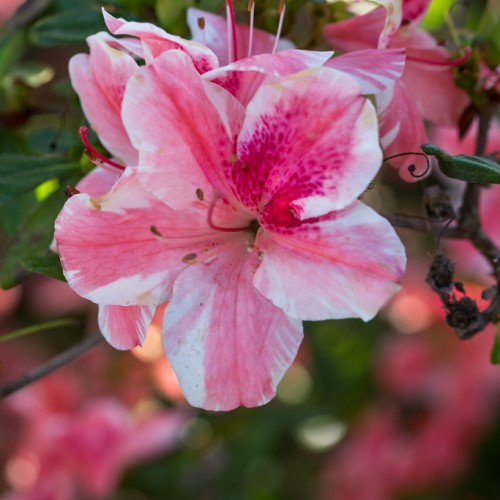
evergreen azalea
Rhododendron 'Girard Dwarf Lavender'
Cycle:
Perennial
Watering:
Average
Hardiness Zone:
4 - 7
Flowers:
Flowers In Spring
Sun:
Part shade
Leaf:
Yes
Growth Rate:
Low
Maintenance:
Moderate
Poisonous To Pets:
Yes
Care Level:
Medium
watering
Generally, evergreen azaleas thrive in moist but well-drained soil. Water them once or twice a week, making sure to thoroughly soak the ground. Reduce the watering frequency to 1 every 2 weeks in early autumn and reduce it further down to once a month when temperatures drop below 10°C. Be sure to check the soil and adjust your watering frequency based on the water retention of the soil and the weather, as it can be difficult to know how much water your plant needs from week to week. During very hot weather, water your evergreen azalea more frequently.
sunlight
Evergreen azaleas are a popular species of plant and require part-shade to full-shade in order to thrive. In general, Rhododendron 'Girard Dwarf Lavender' evergreen azaleas need at least 4-6 hours of indirect sunlight per day, either morning or afternoon sunlight works best. Too much sunlight may result in sunburned foliage, so it is important that these plants get access to some shade and shelter during the hottest times of the day. When given the proper amount of sunlight, the evergreen azalea will develop deep purple-blue flowers that will bloom in spring and last through early summer.
pruning
The evergreen azalea (Rhododendron 'Girard Dwarf Lavender') should be pruned twice per year, once in the early spring and then again in the summer. The pruning during the early spring should be light, focusing on the older woody stems to encourage growth and shape the shrub. The pruning during the summer should be minimal with the goal simply being to improve the overall shape and form of the shrub. Pruning should be done slowly and carefully, removing no more than 1/3 of the plant's total foliage. It is important to Pay attention to the leaves and stems so that the plant does not become too thin or lopsided. This will provide the plant with the best chance of long-term health.
